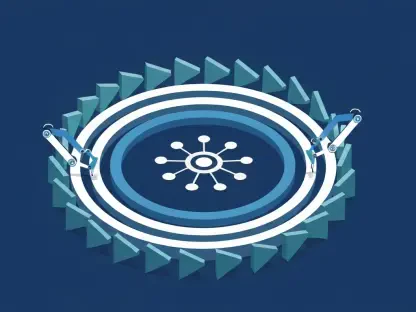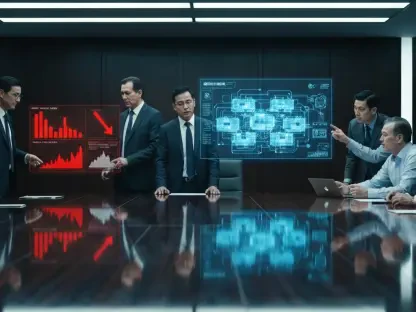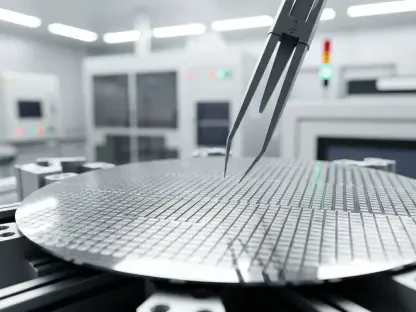As we dive into the fascinating intersection of quantum computing and high-performance computing (HPC), I’m thrilled to speak with Oscar Vail, a renowned technology expert whose pioneering work in quantum integration, robotics, and open-source innovation has positioned him at the cutting edge of the industry. Today, we’ll explore a groundbreaking tool that bridges the gap between quantum and classical systems, delving into its development, functionality, and the collaborative efforts behind it. We’ll also discuss the unique challenges of hybrid computing environments, the strategic role of quantum as an accelerator, and the future of these technologies in supercomputing centers.
What sparked the idea to develop a tool like sys-sage for integrating quantum and supercomputer systems?
The inspiration for sys-sage came from the growing need to harness the unique strengths of quantum computing while maintaining the robustness of traditional HPC systems. We saw that quantum computers, with their ability to tackle specific, complex problems, could revolutionize certain fields, but integrating them with classical systems was a major hurdle. The differences in architecture and control mechanisms made seamless interaction nearly impossible without a unifying framework. So, we set out to create sys-sage as a bridge—a tool that could help these two worlds work together efficiently.
What were some of the biggest challenges you aimed to address in combining these very different computing paradigms?
One of the primary challenges was the fundamental mismatch between quantum and classical systems. Quantum computers operate on qubits with properties like superposition and entanglement, which are entirely alien to the binary logic of classical HPC. This creates issues in communication, data handling, and resource allocation. Additionally, there was no standardized way to map system topologies or optimize tasks across both environments. We wanted sys-sage to provide a solution by offering a unified interface that could interpret and manage these disparities without losing performance.
Can you explain what the sys-sage library is and how it functions within a supercomputing environment?
Sys-sage is essentially a central interface designed for supercomputers, acting as a repository of both static and dynamic information about a system’s architecture and topology. Think of it as a detailed map that shows how every component—processors, memory, interconnects—is structured and connected. In a supercomputing environment, it collects this data and makes it accessible to applications or other system tools, enabling better decision-making for task allocation and resource optimization. It’s like giving the system a clear picture of itself to work smarter, not harder.
Why is having such a detailed understanding of a system’s components and connections so critical for optimization?
Without a detailed map, you’re essentially working blind. In HPC, where performance is everything, knowing the exact layout of components and how they interact allows you to minimize latency, reduce bottlenecks, and allocate resources efficiently. For example, if a task needs high-speed interconnects, sys-sage can identify the best path or node for it. This level of insight becomes even more crucial when you introduce quantum systems, as their unique requirements demand precise alignment with the right classical resources to avoid inefficiencies.
How has sys-sage been adapted to handle the unique aspects of quantum computing alongside classical systems?
We expanded sys-sage to include quantum-specific component types and topologies, which wasn’t part of its original design. This meant redefining how the library represents and connects elements like qubits and quantum gates alongside classical hardware. The goal was to create a hybrid structure where both systems could be understood and managed through a single interface. This adaptation allows sys-sage to recognize the distinct operational needs of quantum hardware while ensuring it integrates smoothly with the classical HPC environment.
How does sys-sage facilitate decision-making about whether a task should run on a quantum or classical system?
Sys-sage looks at the computational characteristics of a task—things like the nature of the problem, data dependencies, and potential for parallelism. It then matches these traits against the strengths of quantum or classical resources. For instance, quantum systems excel at optimization problems or simulations involving quantum mechanics, while classical systems are better for general-purpose computing. Sys-sage uses its detailed topology map to assign the task to the most suitable system, ensuring the best performance by leveraging the right hardware for the job.
Can you share how collaboration, particularly with major supercomputing centers, contributed to the development and testing of sys-sage?
Collaboration was vital, especially with partners like the Leibniz Supercomputing Center. Working with them gave us access to real-world supercomputing environments where we could test sys-sage under actual conditions. Their expertise and infrastructure helped us validate the tool’s ability to handle hybrid setups and provided feedback on practical challenges. This partnership also led to experimental demonstrations that showcased how sys-sage could integrate quantum and classical systems effectively, pushing the project forward in ways that wouldn’t have been possible in isolation.
Quantum computers are often described as accelerators rather than replacements for traditional HPC. Can you elaborate on this perspective?
Absolutely. Quantum computers aren’t meant to replace classical HPC systems because they’re not universally better at everything. They shine in very specific areas—like solving optimization problems, cryptography, or molecular simulations—where their unique properties give them an edge. For most general tasks, classical systems are still more efficient and practical. So, quantum acts as an accelerator, a specialized tool within the broader HPC ecosystem, speeding up certain computations while classical systems handle the rest. It’s about complementarity, not competition.
How do you envision the balance between quantum and classical computing evolving in the future of supercomputing centers?
I think we’ll see a gradual shift where quantum systems become more integrated into supercomputing centers as their reliability and accessibility improve. Over the next decade, I expect hybrid architectures to become the norm, with tools like sys-sage playing a central role in managing workloads across both domains. Classical systems will likely remain the backbone for general computing, while quantum accelerators will take on an increasing share of specialized tasks. The balance will depend on advancements in quantum hardware and software, but the synergy between the two will define the future of high-performance computing.
What is your forecast for the role of hybrid tools like sys-sage in shaping the next generation of computing technologies?
I believe hybrid tools like sys-sage will be foundational in unlocking the full potential of next-generation computing. As quantum technologies mature, the demand for seamless integration with classical systems will only grow. Tools like sys-sage will evolve to become smarter, perhaps incorporating AI to predict and optimize resource allocation even more effectively. My forecast is that within a decade, such tools will be standard in every major supercomputing center, acting as the glue that binds diverse computing paradigms together, driving innovation across industries from drug discovery to climate modeling.









